WHOLE SPICES

ANISE SEED
VIEWANISE SEED
Native to the Mediterranean and the Middle East anise is one of the most prolific spices in the culinary world. While originally used as a medicine for indigestion and ulcers, many cultures quickly found a use for it in the kitchen. From sweets to preserves to liquor, anise made the rounds and became a staple ingredient throughout Europe, Asia, Australia, and soon the Americas.
The flavor of anise seed is undeniably licorice-like with a piquant sweetness and mild peppery notes that lends itself well to candy making. For a quick dish that easily utilizes the flavor of anise, peel and cut a carrot into thin coins. Sauté the carrots in butter, a bit of honey, and a teaspoon of anise seed over medium-high heat until softened. You’ll find them to be a delightful side dish with game birds or ham.

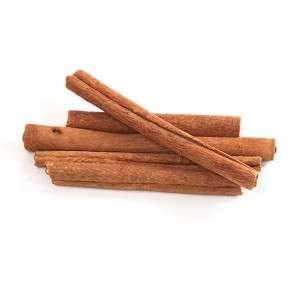
CINNAMON STICKS 4 INCHES
VIEWCINNAMON STICKS 4 INCHES
Cinnamon is sourced from the bark of various species of the genus Cinnamomum. Cinnamomum is a tree farmed in much of Asia, though primarily in Indonesia, China, and Vietnam. The spicy and unique flavor, sweet aroma, and warm heat are derived from an essential oil called cinnamaldehyde.
To produce cinnamon, a tree is grown for about 2 years. Afterwards, it is chopped down to a stump, from which dozens of small shoots will spring up. The shoots are allowed to mature and thicken to about two inches in diameter. After the green outer bark is shaved off the inner bark is bruised and struck evenly until it releases from the heart of the wood. This inner bark is then removed in large sheets, cut into strips, and air-dried. These strips are then curled into quills of cinnamon that are then further dried in ovens or by baking them outside under the sun. After achieving a sufficient tan the quills are sent on their way to the world.

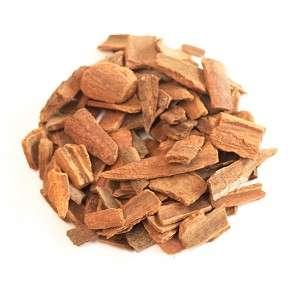
Cassia Bark (Cinnamon)
VIEWCassia Bark (Cinnamon)
Cassia is simply the bark of a laurel tree, a tropical evergreen. Nearly the same as cinnamon, it is sometimes called Chinese Cinnamon. The two spices can be used interchangeably. Cassia is a bit coarser and the taste is not quite as delicate.
Cassia bark is perfect for use when making homemade chai tea blends, pickling spice blends, or if you’re brewing your own spirits. In addition, we love to keep them on hand for the spice grinder to add to coffee and tea, or to toss into curries or masalas. During winter, take a small spoonful and drop them into simmering pots of cider and wine you plan to mull through the afternoon before a big holiday party. Since we use Korintje cinnamon you get a rounded, sweet cinnamon flavor with a mild bite that won’t overpower your recipe. Use cassia spice in the same manner as Cinnamon.


annatto-seed
VIEWannatto-seed
Also known as achiote, annatto seeds grow inside the spiny fruits of the achiote tree. When ground into annatto powder, Annatto’s primary use through history has been as a coloring agent for makeup, textiles, or to color foods. In particular, many cheeses use annatto to achieve an orange or red color such as Mimolette, Red Leicester, and Cheddar.
However, many people are beginning to utilize annatto seed as a spice in and of itself. The flavor is bittersweet with notes of mace and mint. The seeds are often added to oils to flavor and color them, or soaked into hot water to make a flame-colored broth. Add a few seeds to rice dishes or stews for color and a subtle spicy flavor.


Cloves
VIEWCloves
The clove actually isn’t a stick or piece of wood, but actually a dried and unopened flower. These flowers are originally native to the Moluccas, a chain of volcanic islands near Indonesia. Few people ever see the delicate red flowers due to the spice’s popularity.
The clove also has a history of medical use. Their essential oils have the ability to assist digestion by increasing stomach acid, relax muscles in the body, and whole cloves work as oral painkillers (pop one in your mouth next to a sore tooth).

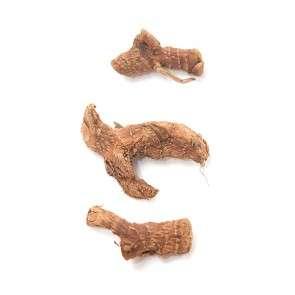
galangal
VIEWgalangal
Also known as Thai ginger, this unique rhizome looks similar to ginger, but has a shinier skin and stonier look.
While it’s thought that you can substitute ginger for galangal that isn’t very true. Many Vietnamese, Hmong, Laotian, and Indonesian recipes call for both as they have different flavors. Galangal has a ginger-ness to it, but it also had an intense floral sweetness, piney flavors, and a more penetrating spice with a hint of cinnamon.
Whole galangal is fibrous and very hard, and is more so when dried. It can be added to soups or stews and fished out later. To use it otherwise you will need a strong spice grinder.


green-cardamon
VIEWgreen-cardamon
Green cardamom pods are a collection of contrasts: soft and penetrating, lemony and piney, smoky and clean. These contrasts all balance perfectly in both sweet and savory cooking.
A fruit native to India and Papua New Guinea green cardamom pods has been used in sweet and savory cooking for thousands of years throughout India, Asia, Northern Africa, and the Middle East. The Vikings then brought the spice to Scandinavia where it continues to be very popular in baked goods and sweets.
The flavor is complex, fierce, piney, citric, and a bit peppery. Toasted and ground cardamom is phenomenal in breads, pastries, pork dishes, pilafs, legume dishes, and poultry.

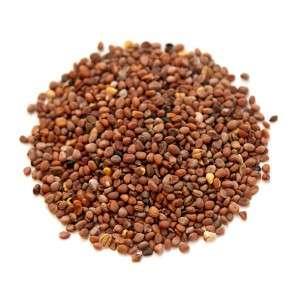
organic-daikon-radish-seeds
VIEWorganic-daikon-radish-seeds
The daikon radish is a mild-flavored specimen of the sativus species. The name comes from the Japanese word daikon, which means “large root.” The seeds are soft with a giving crunch from the skins. Their flavor is mildly sweet and nutty, with hints of wheat. After swallowing you may find a lingering heat creeping up your throat similar to the peppery kick that a proper radish possesses.
Delightful toasted or raw the seeds are often nibbled on their own, added to salads or breads, used as garnish for soups, or ground into pastes or pestos

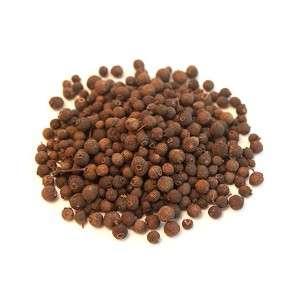
whole-allspice-berries
VIEWwhole-allspice-berries
Allspice, also known as pimenta, Jamaica pepper, Turkish yenibahar, or newspice, is native to the West Indies and the Caribbean. In fact, due to its finicky nature, it’s one of the few spices that are still exclusively grown in its native region. The name allspice refers to its compound aroma that seems like it’s a mixture of mace, clove, cardamom, and cinnamon. The berries are actually plucked when green and are cured in the blazing tropical sun on large concrete slabs until they turn black and their shells become fragrant with oil.
Jamaican allspice berries have a place in preserved goods and play an important role in spice blends and rubs like jerk seasoning and garam masala. In addition, it plays a central role in many North American pastries such as gingerbread cookies and pumpkin pie.
Whole berries can be ground up and toasted for a fresher, more intense allspice flavor than pre-ground allspice. Whole Jamaican allspice berries are also essential for proper pickling.








